Reviews
John Hillcoat
USA, 2009
Credits
Review by Adam Balz
Posted on 29 August 2013
Source Netflix Instant
Categories Favorites: The Apocalypse
McCarthy began scribbling notes on a reporter’s notepad. Hillcoat and I eyed each other nervously. By the end, he had pages of the damned things. He stood up and stretched, yawned and said absolutely nothing as the credits rolled. Finally Hillcoat asked: “Well?” “I have to go to the restroom,” was the impassive response, and he was gone. “Just like a critic,” I murmured.
—Screenwriter Joe Penhall
The world of Cormac McCarthy’s The Road is hell in perpetuity. Its surface is burned and coated with ash, and its sky is choked by smoke and dripping with acid; there are few animals, trees fall suddenly or are burned away, and one is almost always suspicious of others, and for good reason. This is a land of rape, slavery, and cannibalism, all of it committed without afterthought. Morality has warped to fit a hunter-scavenger method of survival, and as the novel opens, the very prospect of anything in this world persevering seems dire.
Wandering this hellscape is a nameless man and a boy, their possessions fitting in two small knapsacks and the belly of an old shopping cart. The man, his memory still sharp with images of his life and his world before its destruction, looks to preserve a semblance of purity and virtue in the boy by teaching him ways to “keep the flame” alive within himself. For much of McCarthy’s novel, this struggle to survive without becoming the very people who would do them harm takes precedence over the more obvious struggle to find food and shelter. The man, it seems, does not care if or when he ever eats again, just so long as the boy is kept safe and his spirit - the spirit he himself has nurtured since the boy’s first days - is fully preserved.
Because McCarthy’s novel focuses on how the man and boy interact with one another, much of its 300 pages are pretty straightforward. However, as is McCarthy’s style, the storyline often drifts into ruminations on deeply complex issues that are rambling, allusive, paradoxical, heavy with abstract and archaic vocabulary, and buried under irregular metaphors. There are passages concerning a bolus of snakes being burned alive, an old man who talks of godlessness (“There is no god and we are his prophets”), a single can of Coca Cola, and dreams of a translucent beast who stands blind across cave-water. Each requires its own analysis to understand, and McCarthy spends no time helping us to solve them, guiding us into a dizzying patchwork of symbols and imagery made all the more labyrinthine by his style: little to no punctuation, only one named character - the old man calls himself Ely, then admits the name is a lie - and paragraphs comprised of either one-word sentences or thoughts that run on for close to half the page.
Of the many complex passages in McCarthy’s novel, the two most confounding by far are both single paragraphs concerning animals. The first appears midway through the novel and involves a dog. As the man and the boy continue on their journey towards the ocean, the paragraph appears without any preface other than a moment pages before when, hearing a dog, the boy begs for a companion, for the man to save this one unexpected sign of life.
The dog that he remembers followed us for two days. I tried to coax it to come but it would not. I made a noose of wire to catch it. There were three cartridges in the pistol. None to spare. She walked away down the road. The boy looked after her and then he looked at me and then he looked at the dog and he began to cry and to beg for the dog’s life and I promised I would not hurt the dog. A trellis of a dog with the hide stretched over it. The next day it was gone. That is the dog he remembers. He doesnt remember any little boys. (87)
Even in context, this one paragraph makes little sense. Not only does it mark a sudden and singular shift in style - it is the only paragraph told from the man’s point of view that isn’t a dream - but it seems to spin itself alive from past, present, and future dimensions. The first three sentences recall a time before, when the man attempted to catch a stray at the boy’s insistence. Perhaps this was a time when the man’s wife was still alive, for the next two sentences - “There were three cartridges in the pistol. None to spare.” - implies a time before they split, before a time when the wife bemoans not killing themselves while there were enough bullets. The fate of the third bullet is never explained, though we know it was not used on either the wife or the dog, as both remain alive long after it’s been spent—a detail we draw from the next, much longer sentence. The paragraph ends with two sentences that seem to dispel any memory of a real dog - as though he were lying to himself, or perhaps lying to the boy, to hide a reality in which dogs must be killed and eaten - and one last sentence about a little boy, supposedly the one spied in a previous town.
Or maybe the fictitious little boy, much like the trellis in dog skin, is a lie, told to comfort the agony of two people trying to survive. There are some who might posit, somewhat legitimately, that the boy who walks with the man is not in fact his son, that his actual child was either born dead or was killed along the way. Again, we don’t know for sure, but there is a paradoxical distance between the man and the boy that puts their relationship into question. The boy has existed in the man’s world for almost as long as the man’s world has been on fire, and so there is a connection between the two that is undeniable. But for a man so invested in making sure the boy is not only healthy and nurtured but also protected, the distance is a startling human one that renders the man a deeply complicated and unknowable figure.
The second confounding paragraph is the final one, in which McCarthy wraps up his story with a strange, sudden passage concerning ancient fish.
Once there were brook trout in the streams in the mountains. You could see them standing in the amber current where the white edges of their finds wimpled softly in the flow. They smelled of moss in your hand. Polished and muscular and torsional. On their backs were vermiculate patterns that were maps of the world in its becoming. Maps and mazes. Of a thing which could not be put back. Not be made right again. In the deep glens where they lived all things were older than man and they hummed of mystery. (287)
After almost 300 pages focused squarely on a man and a boy, this final paragraph - a jarring, unprefaced meditation on ancient fish - is bewildering in its lack of context and purpose, at least on the surface. Beneath the surface, however, is McCarthy leaving his readers with a troubling image: a beautiful creature, one so old that it not only proceeds man but carries with it the story of creation—the invention of a world that existed for millennia but exists no more, that “could not be put back” because something has made going back impossible. And that first phrase - “Once there were” - designates this beautiful animal as being no more, presumably killed in the dirty acidic water of the apocalypse, though it could have very easily been done away with years before at the hands of the very men it outranked. In this one paragraph we find not only a subtle indictment of man but implications for where their own future lies: there is no hope, man will perish. The brook trout is reminiscent of man, yet another complicated creature itself scarred and carved by history, and it seems as though both will fall away, committed to the ground as mysterious bones.
In adapting The Road for film, screenwriter Joe Penhall faced a problem that few screenwriters encounter when taking the written word and making it visual: what makes McCarthy’s novel such a rich literary work also makes it impossible to adapt. The aforementioned ruminations, allusions, and metaphors, all of which add depth to the storyline would be utterly puzzling and require far too much contextualizing in order for them to make sense. So the film is but a sliver of the novel. The man’s dream of the cave-beast is gone, as are the snakes, the discussion of the dog, the mystery over a third spent bullet, a memory of the man’s uncle, and so on. All that remains is the story without its symbolic dimensions—a story that retains some complexity, yes, but a painting without full gradation. In adapting The Road, Penhall lost fifty pages or so of prose.
Similarly, McCarthy’s writing style, which adds to the sense of lawlessness and disorder, disappears. And while elements specific to filmmaking are there to pick up the slack - cinematography, makeup, wardrobe - they are no substitute for McCarthy’s own voice, especially when much of what we see as the viewer has been generated by computers rather than, say, the reader’s mind. The dialogue remains mostly intact, with much of the man’s inner monologue transferred into a voice-over edited together by Penhall in what he’d later admit was a very tense conference call with eight other people - none of them being McCarthy himself - but since much of the book’s dialogue involved the boy responding to the man with “Okay,” Penhall lost quite a few more pages there, too.
And yet, much to Penhall’s credit, he added very little new material: a few more moments with the man and his wife, some of them before the apocalypse - the cause of which is never fully explained in either the book or film, though there are clues that speak to natural worldwide catastrophes1 - are the sum of the liberties he takes, with the exception of one quick, cutaway shot at the very end of the film. In result this is an earnest and loyal adaptation, even when you consider how much of the original material was either ignored or unworkable in a cinematic format. Even McCarthy himself seems to have thought so: According to an article written by Penhall for The Guardian, the film was screened for McCarthy on a “chilly” November day in New Mexico. McCarthy took copious notes during the film but, when the lights came up, took a long bathroom break, leaving both screenwriter and director to stew in their anxiety:
Then he reappeared, studied the floor like a man who had dropped his car keys down a storm drain, sighed and said: “It’s really good.” Hillcoat, who had been beaten over the head with the spectre of failure by just about everybody involved up to this point, couldn’t contain his doubts: “Really? You’re not just saying that?” “Listen,” he reassured us, “I didn’t drive all this way to blow smoke up your ass.”
There is an allusion to the novel in there somewhere - an old man reassuring two younger men that they’d done right by him - but what is perhaps most pertinent is that, among the pages of notes McCarthy took during the film, he doesn’t seem to have commented on the one big liberty taken by Penhall’s screenplay, and the one that struck me the most when I first watched the film. As the film draws to its close - the man is dead, the boy has been adopted by a family of nomads - all we see is loyal to the book, including the boy’s obvious skepticism that his new companions are not destined to kill and eat him. (The family’s father reassures him that, no, they do not eat people, responding to the very idea by saying, “You’re kinda weirded out, aren’t ya, kid?”) But there is still the issue of the fish: how will Penhall and Hillcoat, without adding a closing Tarkovsky-esque shot of trout in slow waters, allude to the fate of all creatures including man?
The answer comes in the form of a dog. Looking into the faces of the family - the father, the warm-voiced mother, the quiet boy and girl - he looks down and finds a dog, alive and at their side. Nothing more is said save a closing “Okay” from the boy, and the film cuts to black. The suggestion here is that the dog, so easily a food source for desperate survivors, is a sure sign that, not only are these people trustworthy, but that man has a chance. These people are morally upright; they’ve not only kept the dog alive but well-fed, too, and perhaps this one creature is a harbinger of things to come. Penhall’s dog is McCarthy’s trout, only their message seems to be reversed.
In his article, Penhall makes comparisons between The Road and one of McCarthy’s earlier novels, Blood Meridian, considered by many to be a literary masterpiece:
I had begun my screenplay not long after my own father had died prematurely, identifying with the boy in the book. But by the time we began the edit, I had my own son on the way, and was identifying solely with the father, who, as the world gradually burns up, despairs of ever seeing his son grow old. If [McCarthy’s] other masterpiece, Blood Meridian, was about “the limits of our inhumanity,” McCarthy said, The Road was about “the limits of our humanity.”
McCarthy’s novels have always been populated by men who are guided by a morality so poisoned they find purpose and joy in misery. Think of Judge Holden’s monologue on dancing in Blood Meridian or Glanton’s ruthless butchery in the same novel, or Anton Chigurh in No Country for Old Men deciding the fates of innocent bystanders with the flip of a coin. Inhumanity is the plague of McCarthy’s characters, regardless of the cause or the location - the untamed West, the drug battlefields of southern Texas, post-apocalyptic Appalachia - and Penhall maintains this throughout his adaptation, punctured only by a good father and a dog.
- There are three popular and plausible theories as to the cause of the apocalypse. The first is a supervolcano, one of which currently boils under Yellowstone National Park (and is overdue for an eruption). The second is a meteor colliding with earth, à la the extinction of the dinosaurs. The third is nuclear winter. Considering that McCarthy spends much of his time around scientists in New Mexico instead of other writers seems to suggest that he would know quite a bit about all three scenarios and be able to keep just enough pertinent information from us to make all three plausible without being provable as the sole cause. For what it’s worth, my vote would be for the supervolcano, especially since the road being walked by both the man and the boy is taking them towards the ocean and away from Yellowstone. ↩
More Favorites: The Apocalypse
-
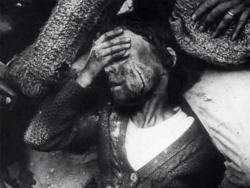
The War Game
1965 -
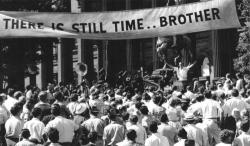
On The Beach
1959 -
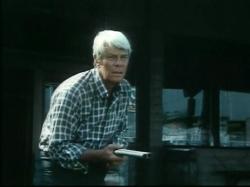
Where Have All the People Gone
1974 -
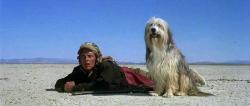
A Boy and His Dog
1975 -
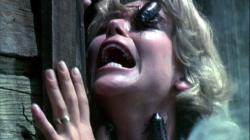
Bug
1975 -
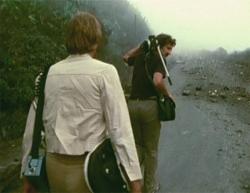
La Soufrière
1977 -
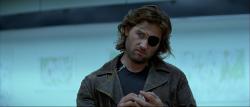
Escape from New York
1981 -

The Road Warrior
1981 -
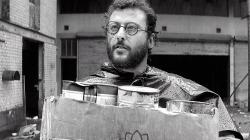
Le Dernier Combat
1983 -
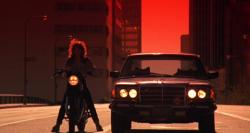
Night of the Comet
1984 -

Threads
1984 -
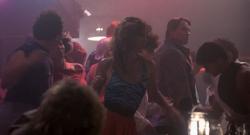
The Terminator
1984 -
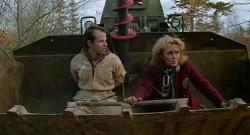
Def-Con 4
1984 -
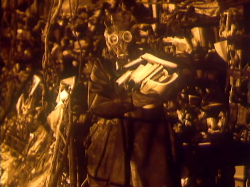
Letters From a Dead Man
1986 -
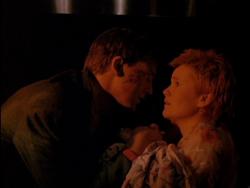
Miracle Mile
1988 -
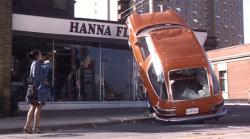
Last Night
1988 -
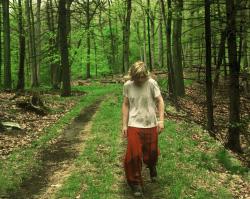
Last Days
2005 -

The Rapture
1991 -

Southland Tales
2006 -
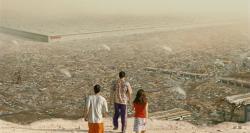
Idiocracy
2006 -
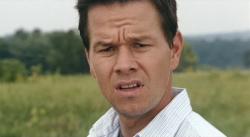
The Happening
2008 -
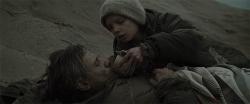
The Road
2009 -
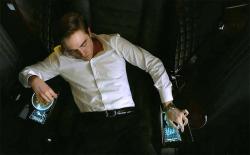
Cosmopolis
2012
We don’t do comments anymore, but you may contact us here or find us on Twitter or Facebook.



